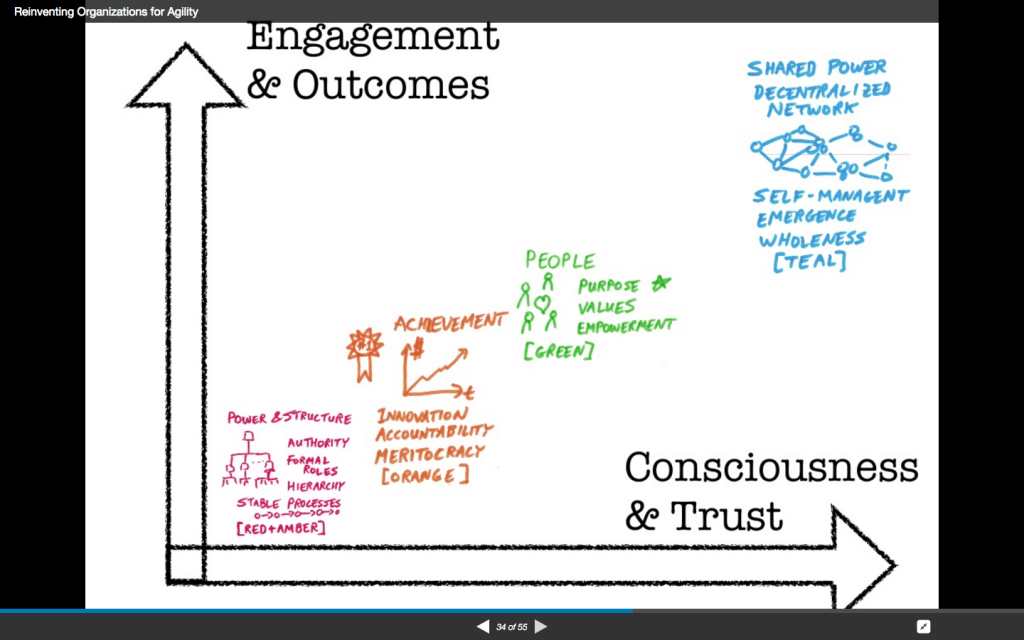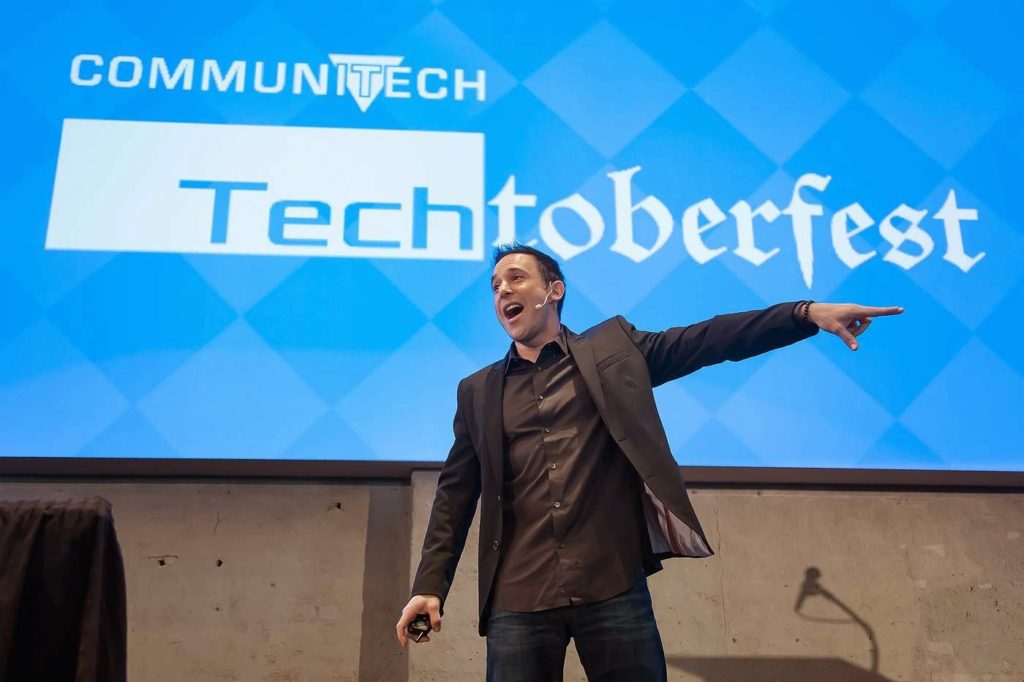

January 7, 2016
Great cultures ,Hacks ,Popular Articles

NOTE: This blog is the #1 overall hack, for the #1 HIRING HACK, please click here.
“Don’t talk about how to hack culture! That will scare corporate clients!”
That’s what people told me.
They were so wrong! The bigger the company, the more they want the hacks. Why? Because hacking is all about empowering anyone to create a shift. Big companies know how hard it is to create massive change. Culture hacks allow change to happen FAST.
First, let’s briefly define what hacking is:
Hacking is finding a vulnerable point in a system, and exploiting that vulnerability to your advantage. The end result is very little investment with maximum gain.
If that made no sense, don’t worry. The hacks work without you needing to know how they work.
I knew about this #1 hack for a long time, but didn’t realize how important it was until I was working with a major company that wanted to implement its core values and they were running into a problem:
People put working hard and driving results over each of those core values. And because of that, they’re not core values. If they were core, they would never be sacrificed.
Changing to a Core values company is a big step. It can take over a year. So how can they change fast?
Well, to diagnose a culture all we have to do is look at their meetings. Meetings are a subset of culture. And the first data within meetings we look at is people’s relationship to time.
Cultures that are on time inherently respect each other. Cultures that start late and go late tolerate behavior that advances the individual over the culture as a whole.
When I was at Zappos, CEO Tony Hsieh was always on time or early. Never ever did I see him late.
This is a very small hack, but it has a massive impact. If you feel resistance from yourself or anyone else, simply run a 2 week experiment where people have to be on time. Then let the results speak for themselves.
January 6, 2016
Great cultures
Let’s face it. Our culture communicates more with images than words. And we can use that to our advantage.
I’ve noticed that at strong company cultures people are often using images to say what they mean, and the images break through much better than any words.
Take this image…
This was sent to me with no words when someone was waiting for a response from me. I immediately started laughing and saved it to use on someone else. So what could have been an email that put me on the defensive with “Hey, why have you not responded?” instead felt totally disarming.
Try google image search for funny images or check out the gold mine that is Giphy.
November 11, 2015
Great cultures ,Values ,Vision

The latest fascination on the edge of management is “Going Teal.” You can learn about it from the article and from the graphic. I’m only going to make one basic point I’ve seen everyone leave out:
You can’t go straight to Teal.
Notice that what is listed in every other level is still applicable! You can’t simply throw those things out. And if you’re not solid in those areas then that’s where you need to start.
November 2, 2015
Great cultures ,Values
I know it can feel heavy and loaded when we talk about core values. It’s like the health food of both personal and corporate development. It’s absolutely necessary yet people don’t get excited about it.
Here’s how you can…
Think about your values this way. There are three kinds:
1. Integrity: The cost of entry
2. Core set
3. Key differentiators
There’s a reason “integrity” is not on the core values list at Zappos. It’s because it’s so necessary that without it, no other value matters. How can you fulfill on other values if you don’t even keep your word? That’s why the training process includes requirements like “Show up at every day before 7am for four weeks, or you’re cut.”
Tell tale signs of a compromise in integrity includes:
These are the ones that are basic to just about everyone. They include values like:
They’re necessary, but people often compromise on them and then they’re unsatisfied and disappointed.
These are values that distinctly separate you from everyone else.
I realized after looking back on a few relationships that there were parts missing that I didn’t realize were actually core to me. I don’t include these in the core set above because they’re values that are more unique to you.
For me those are:
Willingness
One’s desire and ability to try new things, entertain new thoughts, experiment and play
Curiosity
The desire to constantly learn and know more about a person through inquiries and questions.
For Zappos it’s “Deliver WOW!” and “Create fun and a little weirdness.”
For the Navy Seals it’s “I will not fail.”
For Google (in the early days) it was “Don’t be evil.”
For Apple, I believe it’s excellence. In fact, I don’t they care so much about customer service the way Zappos does. Apple cares about doing things with pure excellence, and customer service is simply something they do.
What is your key differentiator value?
October 27, 2015
Great cultures ,Popular Articles

It’s the wild wild west when it comes to speaker prices. It can range from free up to over $250,000. So how do you know what’s the right cost?
I’ve been speaking for years, and I use a mix of speaking, workshops, consulting and products. I’ve done everything from a free hour to help out a friend to charging $45,000 for a comprehensive full-day presentation, workshop and follow-up support.
$150,000 +
This is the Bill Clinton level. It’s like getting the chance to see Elvis while he’s still alive. I heard he once walked in late, not even knowing the audience and he still had everyone eating out of the palm of his hand… While this rate sounds a bit ludicrous, I spoke to an organization who hired him and they said it was cost effective because of how much money they raised through the Gala he attended.
$75,000 – $140,000
This is the Seth Godin level – very famous and strong speakers. I saw Seth speak in Las Vegas and he takes the audience through his entire journey of thinking across his books, so it’s like getting a massive education in marketing (and he makes it very funny). You can use my guide at the end of the article to figure out if it’s worth it, but either way, at this level you’ll get a very engaging experience.
$35,000 – $70,000
I would call this the risky zone. At this rate you’re getting famous authors, former business leaders or even current CEO’s of great companies. They can charge this much because that’s what their time is worth to them and they have strong brand names associated with them. Whether or not they’re a great speaker is where you roll the dice. I would make sure to watch many of their videos and ask for a reference. Don’t assume they’re great just because they’re expensive.
$20,000 – $30,000
I consider this the sweet spot. The speakers at this level are not necessarily a brand names themselves. Instead they serve the best brands in the world (make sure to look at their client list and past speaking engagements). Also, speakers at this level speak often enough to master the craft but still build in time to develop new content and stay up to date on the field.
$5,000 – $10,000
This is the bargain zone. And like any bargain you could either be totally thrilled or end up wishing you had spent a little more to get a way better result. This is the rate you’ll see for newer speakers or speakers who live on the road and do a very high volume of speeches every year. Sometimes you can get a high-end speaker at this rate if they happen to be in your city and can easily drop by.
Free
There are many scenarios where a speech can be free, some great and others highly cautionary. When I managed a company at Zappos there were great speakers who offered to speak for free to simply participate in the Zappos culture and and be part of the culture wave. Of course it’s rare to have such a strong brand, but you can still offer an experience that could be tempting. Early in my career I spoke for free in Malaysia because the company took me on their team vacation and also gave me access to a mastermind of successful entrepreneurs.
I would be wary of speakers who want to speak for free because they are selling something at the end. Again, some of these speakers can be great, but others have objectives other than serving the specific needs of your organization or audience.
1. What is the actual value?
In other words, if this speaker actually made your problem go away, or generated X dollars in additional revenue, or aligned all of your people… how much is that worth to you?
2. What’s the per head cost?
What’s great about a speech is you get to educate and inspire an entire audience at one time. So if you have a a company of 5000 people and you hire a $50,000 speaker, you’re only paying $10 per person for their education and growth. Also, consider a full cost accounting of your event. What is the real ROI on the food, or a fancy hotel conference room vs. a highly impactful experience?
3. What is the entire experience?
There’s a big difference between sitting and hearing lecture for an hour and having an experience that forever changes their world. There opportunities to get interactive and dive in. I’ve found that the most powerful experiences combine content, interaction and team-building. Ask your speaker what kind of experience they can create for your audience and what the result will be.
September 27, 2015
Great cultures ,Popular Articles ,Productivity ,Values

There’s one word I keep hearing at companies when they express their desires. It’s like the holy grail people are seeking. What people want most, whether leaders or workers, is this:
And what’s interesting is I see this most in companies that are successful! Successful companies have a plethora of opportunities, choices and options. And so the pain comes from questions such as:
The funny thing is that focusing on these questions only makes the problem worse, because it actually brings up even more options.
I was running a culture game around conflict and it was interesting how challenging it was for people to follow a basic language protocol that focused their communication. It was like they were wrapping their brains around how to be more specific and concise when they were used to simply talking and figuring things out as conversation went on.
This was in stark contrast to a podcast I heard with a 24 year old Army Ranger whose clarity in communication was incredible. He could think so clearly and communicate with quick precision, without meandering thought. I immediately thought: This is the kind of person I’d like to hire.
So there are two ways to solve this dilemma of clarity. First, as I’ve always said, the biggest impact you can have on your culture is who you let into the organization.
It’s always tempting to go with the person who has the exact experience we need on their résumé. But that’s a terrible idea. Unless it is ultra specific (think: nuclear chemist), then hiring someone who has already “been there, done that” means they won’t grow a lot and so they won’t give their best.
Whereas if you hire someone who:
a) loves to learn (and learns fast)
b) thinks clearly (more on that in a moment)
c) communicates clearly (succinctly, on point, and looks you in the eye)
Then you’ll have someone you want for life.
The reason an Army Ranger can think so clearly is because their lives are built around the 3 P’s:
Whether it’s the core values of Whole Foods, or the credo of the Navy Seals, the strongest organizations run on principles. Principle define who’s in and who is out. They act as guides for decision making and they reduce politics by aligning people to agreed upon concepts rather than to people in power. If you haven’t figured out your principles, check out the core values process in my book The Culture Blueprint.
There’s an anecdote from the Checklist Manifesto that says a beginner pilot uses a checklist to prepare for a flight. Do you know what a veteran pilot with 30 years experience on a 747 uses? The same thing: A checklist. If it’s clear that we must do it and hold to a standard of excellence, then a protocol like a checklist is very useful. And this is not just for processes, but also for conversations. That’s why I have a protocol that I teach for conflict resolution. By staying within the process it allows people to feel safe. New management systems such as Holacracy are based on this concept. If companies had a protocol for delegating it would relieve so much pain.
Policies can actually be quite liberating when used effectively. For example, a policy can be that any employee can use up to $500 to remedy a customer service error without asking for approval. That policy can empower people to make decisions while still keeping a safeguard on the process.
If you feel overwhelmed by all the decisions you need to make, consider if there’s a breakdown in clarity and how precise communication, principles, protocols and policies can help.